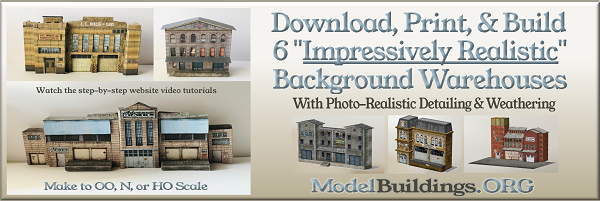Everything on model trains, model railroads, model railways, locomotives, model train layouts, scenery, wiring, DCC and more. Enjoy the world's best hobby... model railroading!
Wiring Mistakes of New Model Railroaders
The most common wiring mistake on a model railroad is doing too much without testing, such as, wiring ten turnouts and all the track, only to find it doesn’t work. Where do you start to fix such a problem? I would say, start over.
If you are new to the hobby, start small, such as an oval. With the power pack turned off and unplugged, connect two wires, one to each rail and to the terminals marked “Variable Track 0 To 12 Volts DC.” If in doubt read the instructions. Now plug in the power pack. if no smoke or sparks, turn the power pack on. Still nothing advance the throttle speed control. Still nothing, GOOD, turn the speed control off and place a locomotive on the tracks, making sure ALL the wheels are properly on the track. Advance the throttle and the locomotive should move. If not it may need a SLIGHT nudge. If it moves, stop it, move the “Direction” button, and try it in reverse. If the locomotive runs in both directions add some cars and play trains. Yes, I said play, because model railroading is to be FUN.
Now you have an operating model railroad that you can add to, one item at a time and test. As you gain experience you will have more confidence and become braver.
Add your comment.
7 Responses to Wiring Mistakes of New Model Railroaders
Leave a Reply
















I’ve got a wee problem that you might be able to help me with.
Two parallel tracks,one loops back to form a 6, now we have polarity as (bottom to top) +-,+-,-+: how do I join the -+ end back to the rest of the track ,which is all +-, and still allow for single cab running?
Confused
Shaun
NZ
Shaun, if you don’t get a response inside this post you could try using the link in the right hand column to submit your question. Using that link will get your question submitted to the blog moderator who might publish it on the home page as a separate posting where more people will see it. See how you go here first.
When wiring a layout, large or small, half the battle is solved by drawing a diagram first. Then doing a desktop walkthrough. Then you will know where to place power feeds, isolation points, un-couplers, signals and so on.
I cannot visualise exactly what you have there but it sounds like you have a reverse loop, where a train’s direction of travel is reversed by going round a loop-back. There are a couple of ways round this. Have a look at the following three pages on my website. (Sorry about the German. I don’t have the English version handy.)
http://trains.manvell.org.uk/misc/ReverseLoop1.jpg
http://trains.manvell.org.uk/misc/ReverseLoop2.jpg
http://trains.manvell.org.uk/misc/ReverseLoop3.jpg
Loop2 just shows the wiring at positions 1, 3 and 3 in diagram 1.
Sorry, should have added that Loop3 is a completely automated circuit diagram requiring a multi-pole locking relay.
Thanks for your replies.
It is more of a half figure 8. That then runs along side the two parallel tracks (opposite direction) and then loops around to meet the other two tracks so that there is a point that the polarity is opposed. Maybe some form of dpdt switching might be the way to go.
Take care all – will let you know how it goes.
Cheers NZ Shaun
The DPDT switch is a good way to change the polarity manually while you are in the reverse loop. Some people will do it with the track prior to the reverse loop. You will need to double insulate both ends of the loop rails. Now if you are working with DCC then insulate both rails at both ends as above and get an auto reversing circuit and mount it so it feeds the reverse loop and you won’t even see the engine slow down where in DC you would probably stop your engine change the polarity to the track and then reverse the power to that track to continue on. But if you are working with DCC the reversing circuit is the best fix for your situation. They may have them for standard DC but I don’t know for sure on that.
Newman